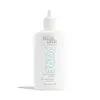What's inside
What's inside
 Key Ingredients
Key Ingredients

 Benefits
Benefits

 Concerns
Concerns

 Ingredients Side-by-side
Ingredients Side-by-side

Water
Skin ConditioningAloe Barbadensis Leaf Juice
Skin ConditioningIsopropyl Palmitate
EmollientBis-PEG-18 Methyl Ether Dimethyl Silane
EmollientCocoglycerides
EmollientDihydroxyacetone
Skin ConditioningButyrospermum Parkii Butter
Skin ConditioningGlyceryl Stearate
EmollientPolyacrylamide
Phenoxyethanol
PreservativeMethylparaben
PreservativeC13-14 Isoparaffin
EmollientTocopheryl Acetate
AntioxidantErythrulose
TanningParfum
MaskingPropylparaben
PreservativeLaureth-7
EmulsifyingCetyl Phosphate
EmulsifyingButylparaben
MaskingEthylparaben
PreservativeTriethanolamine
BufferingWater, Aloe Barbadensis Leaf Juice, Isopropyl Palmitate, Bis-PEG-18 Methyl Ether Dimethyl Silane, Cocoglycerides, Dihydroxyacetone, Butyrospermum Parkii Butter, Glyceryl Stearate, Polyacrylamide, Phenoxyethanol, Methylparaben, C13-14 Isoparaffin, Tocopheryl Acetate, Erythrulose, Parfum, Propylparaben, Laureth-7, Cetyl Phosphate, Butylparaben, Ethylparaben, Triethanolamine
Ingredients Explained
These ingredients are found in both products.
Ingredients higher up in an ingredient list are typically present in a larger amount.
Dihydroxyacetone, or DHA, is a simple sugar. It is frequently used in self-tanning products.
DHA binds to the amino acids in your dead skin cells to create a brown/orange color. Darkening begins to kick in a few hours after application and will continue to develop for up to 3 days. This ingredient can be drying.
Both the US and the EU have approved DHA in self-tanning products. In the EU, DHA is allowed at a maximum concentration of 10%. Most tanning products usually contain amounts between 3-5%.
If you are pregnant or have underlying medical conditions, it is best to speak with a dermatologist about using self-tanning products.
Learn more about DihydroxyacetonePhenoxyethanol is a preservative that has germicide, antimicrobial, and aromatic properties. Studies show that phenoxyethanol can prevent microbial growth. By itself, it has a scent that is similar to that of a rose.
It's often used in formulations along with Caprylyl Glycol to preserve the shelf life of products.
Water. It's the most common cosmetic ingredient of all. You'll usually see it at the top of ingredient lists, meaning that it makes up the largest part of the product.
So why is it so popular? Water most often acts as a solvent - this means that it helps dissolve other ingredients into the formulation.
You'll also recognize water as that liquid we all need to stay alive. If you see this, drink a glass of water. Stay hydrated!
Learn more about Water